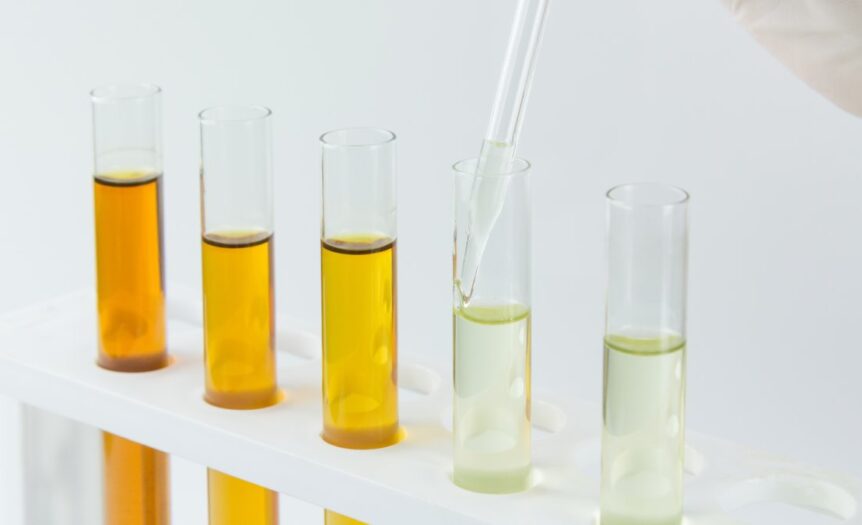Machinery efficiency can make or break industrial operations, so lubricants need to perform at their best. This guide presents the best practices for sampling and monitoring your lubricants and offers insights for maintaining equipment health.
Start With a Clean Sample
The first step in monitoring lubricants involves obtaining a clean sample. Contaminated samples provide inaccurate data and lead to ineffective maintenance. Always use clean tools and containers for collecting samples to support your testing results.
Regularly Schedule Sampling
Routine sampling prevents lapses in machinery performance. Establish a consistent schedule to collect and test lubricant samples.
Use Proper Sampling Techniques
Employ the correct sampling techniques by avoiding drawing samples from stagnant areas where contaminants accumulate. Instead, sample from active parts of the system to get a representative fluid condition reflecting true machinery health.
Analyze Samples With Advanced Tools
Using advanced analysis tools enhances the accuracy of your monitoring efforts. Spectroscopy and particle counters offer detailed insights into lubricant conditions. These tools can help you detect minute changes that could signify bigger issues with your machinery.
Document Findings Meticulously
Another best practice for sampling and monitoring your lubricants is maintaining detailed records of your sampling results. Documenting findings helps to track trends over time, making it easier to spot recurring problems. Use digital logs to store data for easy access and analysis.
Train Staff on Lubricant Monitoring and Storage
Well-trained staff are integral to effective lubricant monitoring. Provide comprehensive training on sampling techniques and interpretation of test results.
Sampling techniques for lubricant monitoring include grab sampling and continuous sampling. Grab sampling involves taking a sample at a specific time from a designated point in the system. This method is useful for checking the condition of the lubricant or detecting sudden changes in contamination levels.
Online sampling continuously monitors the lubricant while in use. It provides real-time data on lubricant condition and can help you detect problems. However, this method may not be feasible for all systems due to equipment and cost constraints.
It’s also important to store lubricants in a clean, dry place away from direct sunlight. Correct storage practices prevent contamination and preserve lubricant quality over time.
Implement Predictive Maintenance
One reason why lubricant testing is important is that you can look for signs of degradation or contamination. Predictive maintenance leverages sampled data to forecast potential machinery failures. After using insights from lubricant analysis, schedule preventative measures before issues escalate. This proactive approach minimizes downtime and extends equipment life.
Understand the Impact of Environment
Environmental factors can affect lubricant performance. For instance, extreme temperatures and dust may necessitate more frequent checks to maintain optimal performance. Monitor the working conditions of your machinery and adjust sampling frequency accordingly.
Engage in Continuous Improvement
Continuous improvement in your lubrication practices enhances their performance. Regularly review your sampling and monitoring processes, and seek areas for refinement. Incremental upgrades to your practices ensure sustained machinery health.
An efficient lubrication program is key to maintaining machinery performance. By following these practices for sampling and monitoring, you ensure the longevity and reliability of your equipment.










 Deering Estate
Deering Estate
 Massage Envy South Miami
Massage Envy South Miami
 Calla Blow Dry
Calla Blow Dry
 My Derma Clinic
My Derma Clinic
 Sushi Maki
Sushi Maki
 Sports Grill
Sports Grill
 The Healthy Kitchen
The Healthy Kitchen
 Golden Rule Seafood
Golden Rule Seafood
 Malanga Cuban Café
Malanga Cuban Café

 Kathleen Ballard
Kathleen Ballard
 Panter, Panter & Sampedro
Panter, Panter & Sampedro
 Vintage Liquors
Vintage Liquors
 The Dog from Ipanema
The Dog from Ipanema
 Rubinstein Family Chiropractic
Rubinstein Family Chiropractic
 Your Pet’s Best
Your Pet’s Best
 Indigo Republic
Indigo Republic




 ATR Luxury Homes
ATR Luxury Homes


 2112 Design Studio
2112 Design Studio
 Hamilton Fox & Company
Hamilton Fox & Company
 Creative Design Services
Creative Design Services
 Best Pest Professionals
Best Pest Professionals
 HD Tree Services
HD Tree Services
 Trinity Air Conditioning Company
Trinity Air Conditioning Company
 Cisca Construction & Development
Cisca Construction & Development
 Mosquito Joe
Mosquito Joe
 Cutler Bay Solar Solutions
Cutler Bay Solar Solutions


 Miami Royal Ballet & Dance
Miami Royal Ballet & Dance
 Christopher Columbus
Christopher Columbus
 Pineview Preschools
Pineview Preschools
 Westminster
Westminster
 Carrollton
Carrollton
 Lil’ Jungle
Lil’ Jungle
 Frost Science Museum
Frost Science Museum
 Palmer Trinity School
Palmer Trinity School
 South Florida Music
South Florida Music
 Pinecrest Orthodontics
Pinecrest Orthodontics
 Dr. Bob Pediatric Dentist
Dr. Bob Pediatric Dentist
 d.pediatrics
d.pediatrics
 South Miami Women’s Health
South Miami Women’s Health

 The Spot Barbershop
The Spot Barbershop
 My Derma Clinic
My Derma Clinic




 Miami Dance Project
Miami Dance Project

 Rubinstein Family Chiropractic
Rubinstein Family Chiropractic
 Indigo Republic
Indigo Republic

 Safes Universe
Safes Universe
 Vintage Liquors
Vintage Liquors
 Evenings Delight
Evenings Delight





 Atchana’s Homegrown Thai
Atchana’s Homegrown Thai
 Baptist Health South Florida
Baptist Health South Florida

 Laser Eye Center of Miami
Laser Eye Center of Miami
 Visiting Angels
Visiting Angels
 OpusCare of South Florida
OpusCare of South Florida

 Your Pet’s Best
Your Pet’s Best





 HD Tree Services
HD Tree Services
 Hamilton Fox & Company
Hamilton Fox & Company


 Creative Design Services
Creative Design Services